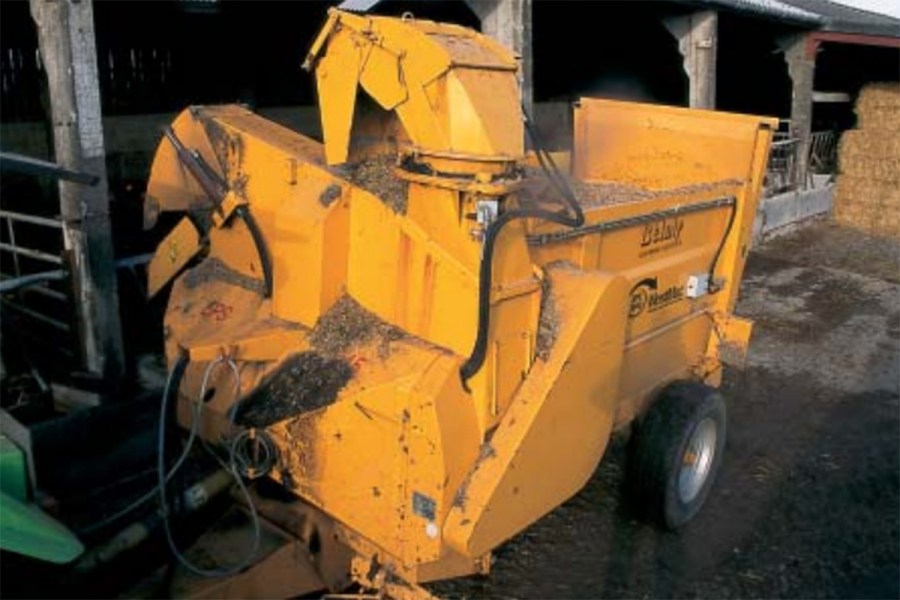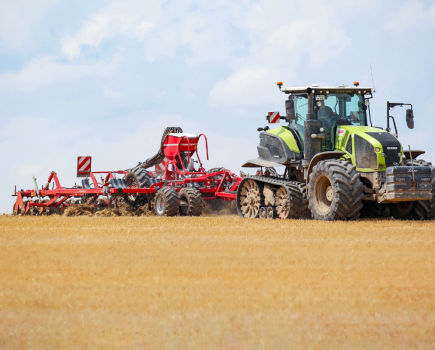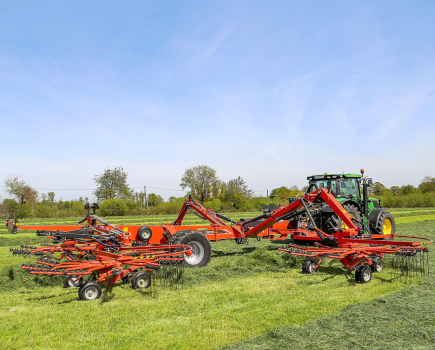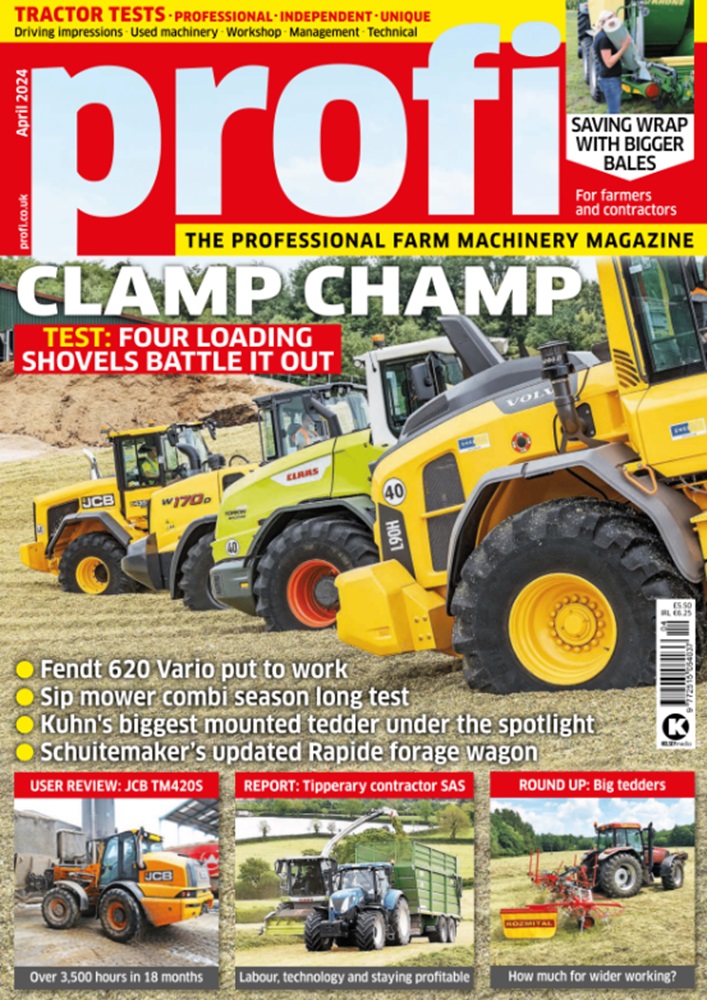Driving impression: WestMac Belair EPS 2045 feeder/bedder Cows all fed and put to bed There was a jolly game of musical chairs in the feeder/bedder market in 2002 one of the main results being WestMac’s exchange of its previous import partner for another specialist in the sector Belair. Martin Rickatson puts the French maker’s EPS 2045 trailed machine under profi scrutiny
It’s a jack of two trades, but can it be the master of both? Universal models that try and do more than one specialist job are often viewed with more than a little suspicion – the muck spreader/trailer, or the hedge/verge cutter, for example. But the feeder/bedder is a tool that takes on two broadly similar jobs, and, provided the operator is not feeding a complicated ration, most machines are just as capable of the feeding task as the bedding job.
WestMac’s offering in this category now comes from the Parigné-based Belair, whose business is focused within the feeder/bedder and straw shredder model sector. The trailed feeder/bedder line spans 2.5-6.9m3 sizes, including the 4.5m3 EPS 2045 dual discharge model detailed here. Six key parts form the heart of the machine: A hydraulically powered floor conveyor transfers the straw/ silage forwards towards a heavyduty shredding rotor equipped with angled knife banks. Behind this, a turbine propels the material to one of two distribution chutes, a lower mounted one for shorter distance work – say, feeding into a trough – and a high-level swivelling unit for blasting material long-range – when bedding cattle yards, for example.
At the rear, a hydraulically raised tailgate allows the bales to be selfloaded, and, when processing two big bales, can be left in the lowered position to hold the second bale and then, while being raised, transfer it up on to the conveyor as the first is shredded. A pair of removeable bale pillars helps hold the bale in place when two round packages are being carried and the door is left in the lowered position to accommodate the second bale. Remote controls at the rear of the 2045 aid self-loading. We weren’t able to self-load for our test, so just put the one bale in the machine and one on the tailgate.
Connecting feeder to power unit is made much easier by a two-position drawbar to accommodate different tractors – simply undo two bolts, slide to the new position and resecure. The company says a 60hp tractor is the minimum needed to operate the machine; for our test an 80hp Deutz-Fahr sufficed. After latching the pick-up hitch and coupling up the pto, all that remains is to plug in one double-acting spool and connect up the 2045’s electric control box. The functions are hydraulicpowered, bar the turbine, which is pto-driven.
[Download the PDF below to read the rest of this article]
For more up-to-date farming news click here and subscribe now to profi and save






